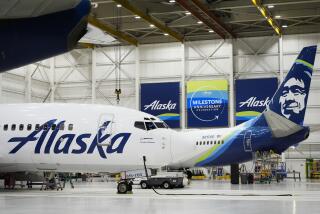Asiana pilot worried about landing before crash in San Francisco
WASHINGTON -- The captain flying the Asiana Airlines flight that crashed in San Francisco in July told accident investigators the approach for landing was “very stressful” and he thought the plane’s automatic throttle was always working, according to a federal report released Wednesday.
Lee Kang Kuk, 46, who was landing at San Francisco International Airport for the first time, told National Transportation Safety Board officials in an interview the visual approach was difficult to perform in the large Boeing 777 because the runway’s light system that helps guide pilots was out of service.
According to the NTSB report, Lee said he was “very concerned” about his ability to bring the plane in without the lights and instrument landing systems. Other pilots in the cockpit told investigators Lee appeared nervous.
The report was released as the NTSB opened a day-long hearing in Washington to explore the crash that killed three passengers and injured 180 on July 6.
Asiana Flight 214 struck a seawall and slammed into the runway, severing its tail section and scattering wreckage across the pavement. The initial investigation indicated the pilots failed to maintain the minimum speed and altitude required for a safe landing.
The hearing will provide the NTSB detailed information about the impact of automated flights systems on human performance, the training of Asiana pilots, aircraft cabin safety and the emergency response by public safety agencies.
The board, however, will make no formal conclusions about the cause of the crash.
Board Chairwoman Deborah Hersman said the NTSB investigation could result in recommendations to improve aircraft design and pilot training.
Though Lee said he thought the automatic throttles were working, investigators found the device had been shifted from “thrust” mode to “hold” mode during the approach and no longer controlled the airspeed.
As a result, the required landing velocity of 137 knots fell to 103 knots, 34 knots below the necessary landing speed.
According to the report, Kuk’s ground school instructor had instructed his students that when the automatic throttle is put in hold mode, it would not automatically re-engage in a descent.
Before the crash, Lee said he was not that confident about operating the Boeing 777s automated flights systems and felt he needed more study, according to the report.
The investigation has focused on whether the automatic throttles were working properly and how closely the Asiana pilots were monitoring their altitude and speed during the landing.
During Wednesday’s hearing, representatives of the Boeing Co. stressed that safety is ultimately the responsibility of the pilots, not automated flight systems.
John Cashman, a former chief pilot of the Boeing 777, testified automation is a tool “to aid the pilot, not replace the pilot.”
NTSB investigator Bill English said the probe had yet to turn up “any anomalies” with the airplane, although systems testing and performance evaluations are ongoing.
ALSO:
72-year-old man accused of viewing child porn on his laptop
Man looking at Christmas lights in San Bernardino finds body
Paul Walker’s family plans funeral after body released by coroner
Twitter: @LADeadline16
More to Read
Start your day right
Sign up for Essential California for news, features and recommendations from the L.A. Times and beyond in your inbox six days a week.
You may occasionally receive promotional content from the Los Angeles Times.







